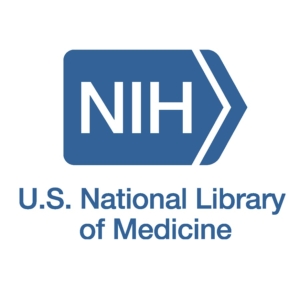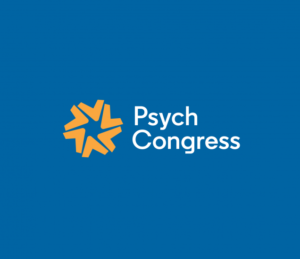The Relationship Between ADHD and Bipolar Disorder

Research shows that up to 20 percent of adults living with bipolar disorder (BD) also have a diagnosis of attention deficit hyperactivity disorder (ADHD).
ADHD and bipolar disorder have similar symptoms—so much so that they’re often confused with one another. Symptoms such as impulsivity and inattention can overlap. This makes it difficult to tell the two disorders apart.
A 2018 Danish study found that BD was almost 11 times more likely in people with a prior diagnosis of ADHD, compared with people who had no prior diagnosis of ADHD or anxiety. It is not clear why ADHD and bipolar disorder so frequently occur together. Genetic and biological factors are believed to be partially responsible.
It is common for ADHD to be diagnosed first since symptoms usually begin to present in childhood. Approximately two-thirds of ADHD patients continue to have symptoms into adulthood.
Bipolar disorder is often not diagnosed before individuals are in their 20s. According to the National Alliance of Mental Illness, more than half of all cases begin between ages 15–25.
“The main difference between the two is that ADHD creates more consistent patterns of behavior, while bipolar disorder can occur in cycles, with a manic episode mimicking many of the symptoms of ADHD,” wrote Hilary Lebow in December on PsychCentral.
Lebow offered a tabular overview of the differences and similarities.
| ADHD | Bipolar Disorder |
| Often diagnosed in childhood | Often diagnosed in adulthood |
| Impact on attention and behavior | Impact on mood and behavior |
| Chronic or persistent | Episodic (occurs in cycles) |
| Increased energy | Increased energy during mania |
| Easily distracted | Easily distracted during the manic phase |
| Talking too much or too fast | Pressured speech during mania |
| Impulsivity | Impulsivity during the manic phase |
| Motor hyperactivity or agitation (fidgeting) | Motor hyperactivity during mania |
| Lower self-esteem | Increased self-esteem during mania |
| Consistent sleep disturbances | Decreased need for sleep during mania |
| Difficulty with memory | Difficulty with memory |
Bipolar disorder is a serious mental illness—especially with co-occurring ADHD. BD is characterized by psychosis, a severe condition in which the person’s ability to recognize reality and emotional responses, thinking processes, judgment, and ability to communicate are so affected that functioning is seriously impaired. Colorado Recovery offers residential treatment for people with psychosis and our bipolar treatment program is highly regarded.
“Research shows that those who live with both ADHD and bipolar disorder have an increased chance of suicidal ideation and substance use disorder (SUD), particularly around alcohol,” warned Lebow in her article.
ADHD is routinely treated with medications that stimulate the central nervous system. Bipolar disorder, on the other hand, is often treated with antidepressants, mood stabilizers, or benzodiazepines. People with both conditions require thorough assessments and careful calibration of their medications as stimulants for ADHD can cause manic episodes if a co-occurring bipolar disorder is present.
“Medications are an important part of treatment but they are only part of the answer,” wrote the late Colorado Recovery founder Richard Warner, MD, in 2000. The mental health professionals at Colorado Recovery utilize a holistic treatment approach to help adults with serious mental health issues stabilize their illness, minimize symptoms, improve functioning, and enhance each person’s social inclusion, quality of life, and sense of meaning in life.
If you have questions about our services to treat schizophrenia, bipolar disorder, and similar mental illnesses, call us at 720-218-4068 to discuss treatment options for you or the person you would like to help.

 Recovery is a term frequently used by people with mental health issues to describe their efforts to live meaningful and satisfying lives. Colorado Recovery approaches mental healthcare based on a path of self-reliance through developed practiced skills. This non-institutionalized social recovery offers comprehensive levels of care supported by an expert medical and clinical team, engaging patients in increasing community participation.
Recovery is a term frequently used by people with mental health issues to describe their efforts to live meaningful and satisfying lives. Colorado Recovery approaches mental healthcare based on a path of self-reliance through developed practiced skills. This non-institutionalized social recovery offers comprehensive levels of care supported by an expert medical and clinical team, engaging patients in increasing community participation. The recovery model is a holistic, patient-centered approach to mental healthcare. This model has gained momentum in recent years and is based on the simple premise that it is possible to recover from a mental health condition.
The recovery model is a holistic, patient-centered approach to mental healthcare. This model has gained momentum in recent years and is based on the simple premise that it is possible to recover from a mental health condition.
 “Unfortunately, we cannot admit patients into this program who are still struggling with a full-force addiction,” says June Bianchi, Transitional Living Program Manager for Colorado Recovery. “Patients should be stable in their recovery, have a good idea what medications work for them, and should able to rely on their support system.” If clients do have substance use issues, the Colorado Recovery team will help address them and help engage that support system to avoid jeopardizing their recovery.
“Unfortunately, we cannot admit patients into this program who are still struggling with a full-force addiction,” says June Bianchi, Transitional Living Program Manager for Colorado Recovery. “Patients should be stable in their recovery, have a good idea what medications work for them, and should able to rely on their support system.” If clients do have substance use issues, the Colorado Recovery team will help address them and help engage that support system to avoid jeopardizing their recovery. Colorado Recovery utilizes six stages in its transitional living process. The first is orientation, a time to adjust to the program. “Clients identify their strengths and areas they want to work on,” explains Robitaille. “They are getting comfortable with independent transportation, time management, food shopping, preparing meals, and other life skills.”
Colorado Recovery utilizes six stages in its transitional living process. The first is orientation, a time to adjust to the program. “Clients identify their strengths and areas they want to work on,” explains Robitaille. “They are getting comfortable with independent transportation, time management, food shopping, preparing meals, and other life skills.” Bipolar disorder and major depression share some similarities. They are sometimes confused because both can include depressive episodes, but there are some key differences.
Bipolar disorder and major depression share some similarities. They are sometimes confused because both can include depressive episodes, but there are some key differences.  “Can people with schizophrenia work?” journalist Gina Ryder recently asked on
“Can people with schizophrenia work?” journalist Gina Ryder recently asked on  Bipolar disorder (BD) is a serious mental illness. According to the
Bipolar disorder (BD) is a serious mental illness. According to the  “Schizophrenia is an often misunderstood chronic mental illness that causes psychosis,” wrote Anna Guildford in a recent article for
“Schizophrenia is an often misunderstood chronic mental illness that causes psychosis,” wrote Anna Guildford in a recent article for  Having a job, receiving a paycheck, and being able to support themselves can significantly improve the quality of life for people with mental illness. Meaningful employment is an important aspect of the treatment model originated by Colorado Recovery founder, Richard Warner. “Work is central to the development of self-esteem and in shaping the social role of the mentally ill person,” Dr. Warner wrote in
Having a job, receiving a paycheck, and being able to support themselves can significantly improve the quality of life for people with mental illness. Meaningful employment is an important aspect of the treatment model originated by Colorado Recovery founder, Richard Warner. “Work is central to the development of self-esteem and in shaping the social role of the mentally ill person,” Dr. Warner wrote in  “People with schizophrenia can be treated in a variety of settings,” wrote the late Colorado Recovery founder Richard Warner, MD, in
“People with schizophrenia can be treated in a variety of settings,” wrote the late Colorado Recovery founder Richard Warner, MD, in 
